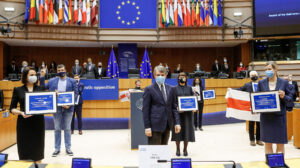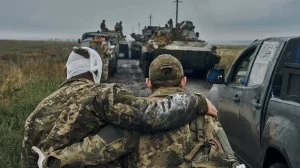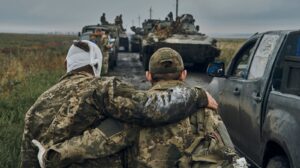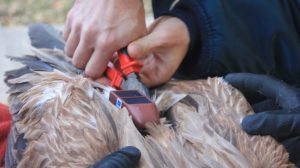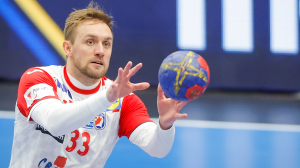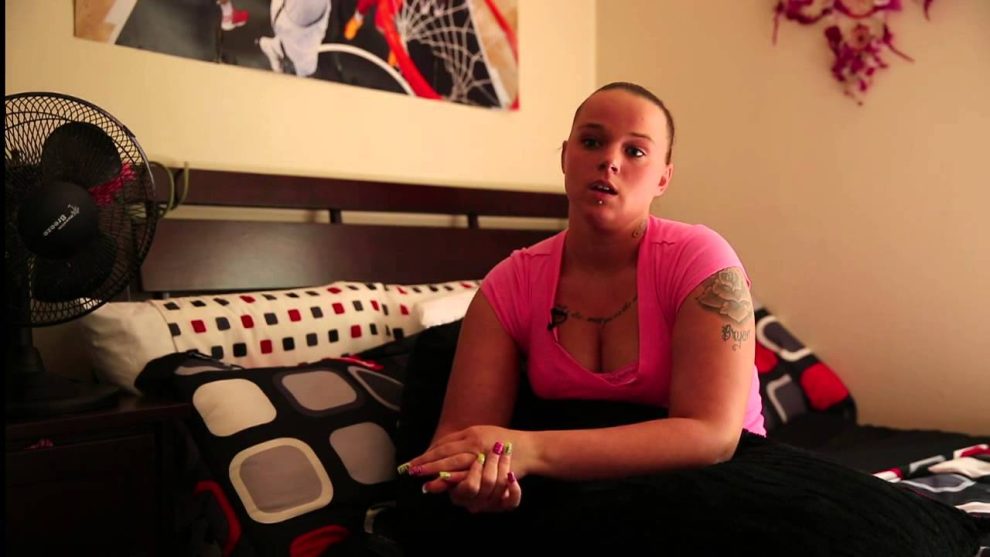The basement of Vukovar Hospital, where lives were saved and lost during the siege of the city by Yugoslav People’s Army troops and Serbian paramilitaries in 1991, is now a Museum of Remembrance.
Everything has been left as it was – the beds, the instruments, the operating room – only instead of real patients there are stylised dolls made of bandages representing some of the 2,500 wounded people who were treated under wartime conditions at the hospital from August 25 to November 18, 1991, when Vukovar fell.
“We worked without stopping, from early morning until late evening. And only when the situation would calm down a little bit and attacks and the bombing would stop for a while, we would have time for various therapeutic procedures, changing bandages, catheterisation…”
These are the words of Dr. Vesna Bosanac, the wartime head of the hospital, who died in March 2022, on a video recording that is played to visitors at the Museum of Remembrance in the basement of the medical facility in eastern Croatia.
“The work of the doctors and nurses would never finish before midnight. And the next morning, everything had to be ready, the instruments clean and sterile, laundry and accessories prepared for the new day that we knew was going to be difficult.”
Of the wounded patients, around 70 per cent were civilians. The oldest was 88, and the youngest was only six months old.
“The most difficult was when dead and wounded children would be brought into the hospital, or a large number of casualties at once. Dead and wounded, old and infirm, like after the bombing of the Vukovar Retirement Home,” Vesna Bosanac says in the video.
On average, about 30 wounded people arrived for treatment daily, even though it was being targeted by the Yugoslav People’s Army. Despite the clear and visible Red Cross markings on the roof and in the yard, an average of 70 to 100 shells fell on the hospital each day. But nevertheless, 20 combatants who belonged to the Yugoslav People’s Army or Serbian paramilitary units were given treatment.
Mirjana Semenic Rutko graduated in medicine in July 1991 and, as a young doctor, immediately started working at the Vukovar Hospital just before the start of the three-month siege. She remained at the hospital until the fall of the town in November.
When asked how the hospital managed to function in such difficult conditions, maintaining a high level of sterility and preventing infections while lacking proper water supplies, Semenic Rutko said that the medics drew on their professional training.
“The lack of water was a serious problem, but we managed to sterilise everything – instruments, bandages, gauze – with disinfectants,” she recalled.
“In such situations, the human factor is always crucial. Things still worked then, because we all tried and did our best.”
After new patients had been given immediate treatment, the old and sick would be moved to civilian shelters and the wounded to the reserve hospital in the nearby Borovo Commerce shoe factory. There were also other civilian shelters in the surrounding area that could accommodate wounded people.
‘They took away the wounded’
Zdenka Stimac in the Museum of Remembrance. Photo: Vuk Tesija/BIRN.
Zdenka Stimac, the manager of the Museum of Remembrance, said that the most difficult period for the hospital was the last two weeks of the siege, when communication with the nearby settlement of Borovo Naselje, the reserve shelter in the Borovo Commerce factory and the civilian shelters in the area was cut, and when evacuation was impossible because of the ferocity of the attacks.
At that point, no one could leave the hospital. In mid-November, just before the fall of the town, there were more than 450 wounded and sick people and over 300 medical personnel with their family members packed into the hospital.
“We witnessed the fall of the town in very difficult conditions, and we had to evacuate the wounded hoping that we could send them to places where they could be provided with better medical and overall assistance and protection,” said Stimac, who has worked at the hospital for 43 years.
Unfortunately, she said, many of them ended up at Ovcara Farm, five kilometres from Vukovar, where around 200 people were massacred on November 20 and then buried in a mass grave.
“When the Yugoslav People’s Army units and Serbian paramilitary formations entered the hospital, they took away the wounded, the medical staff, as well as the civilians who had arrived, thinking that evacuation from the hospital would be safer,” Stimac said.
“This did not happen, as evidenced by the black-framed plaques [in the Museum of Remembrance] with the names of people who were taken from here to Ovcara and killed.”
The grey plaques include the names of 59 people whose bodies have never been found.
New life amid the terror
A still from a video of patients on gurneys in the corridor at Vukovar Hospital in 1991. Photo: Vuk Tesija/BIRN.
The museum’s entrance leads through a corridor to three main rooms, which could hardly accommodate the number of patients who sought treatment during the siege.
Several smaller rooms, the size of a closet, served as a medicine storage area, a kitchen, a sterilisation area and a storage place for water, which was the most valuable resource in those days.
Water was brought in by tank trucks until the last truck was set on fire. After that, water was supplied from the surrounding wells, some of which had not been used for 30 years before the war. During the last two weeks of the siege, the amount of water was strictly limited to half a litre per day per person.
But the hospital was not only used to treat the wounded: a separate area was set aside for pregnant women. During the siege, 16 babies were born there. All of them, luckily, came out alive and well.
After August 24, when all the hospital wards on the first floor were destroyed, the basement areas were put in use. Video footage on display at the museum show how the hospital corridors were packed with injured patients on gurneys.
A hole in the ceiling marks the exact place where a 250-kilogramme bomb fell on the hospital. It penetrated all five floors and only stopped between the legs of a patient. It was pure luck that the bomb didn’t have a detonator and didn’t explode.
Negotiations end in failure
A ceiling at the hospital shows the impact of an artillery attack. Photo: Vuk Tesija/BIRN.
In the last days before the fall of Vukovar, there were negotiations going on with the Yugoslav troops about the safe handover of the hospital, and Dr. Vesna Bosanac was involved, said Semenic Rutko.
But she doubts that anything could have been done to ensure the safety of the people who were killed at Ovcara. “I think that it was not possible to negotiate,” she argued.
“As far as I know, there was an agreement to evacuate the wounded as well as the employees of the hospital to Croatia. But that did not happen and the Yugoslav People’s Army seized the documentation, which was never fully returned. That’s why we don’t have all the records we should have,” she added.
Semenic Rutko was referring to the lists of patients who were treated at the Vukovar hospital in November 1991. The loss of the lists meant that they could never know exactly who was taken away from the hospital by the Yugoslav People’s Army and the Serbian paramilitaries and killed.
“On November 20, at 7.30am, they took out the wounded, who were taken to Ovcara – we only found out about that later. In the morning, they took us through the town and from Negoslavci [in Croatia], we ended up in Sremska Mitrovica [in Serbia], where we spent one night,” she explained.
The following day, they were taken to a prisoner exchange point and released.
Looking back now, 31 years on, Semenic Rutko said that she believes that the lessons of the war have not been properly learned.
“Some people will never realise that war solves nothing except killing people. On both sides. The only thing left behind is mistrust. The fact is that we are not even close to the life we had before [the war],” she said.
She lamented that today, Vukovar is much poorer than it once was, with an ageing population and an uncertain future, a place where the past still overshadows the present.
“I will never forget and I will always bear witness to what happened,” she said.
“If there is no testimony about those events and if the truth is not known, then we will allow bad things to happen again. But if hostilities are constantly heated up [by politicians], I don’t see any way for progress to happen.”
Source : BalkanInsight









